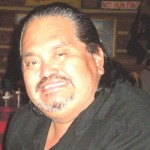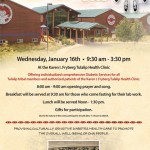Seattle Seahawks rally to defeat Washington Redskins
 Gregg Rosenthal, Around The League editor, www.nfl.com
Gregg Rosenthal, Around The League editor, www.nfl.com
The Seattle Seahawks found themselves in an unfamiliar position early in Sunday’s NFC Wild Card Game against the Washington Redskins, trailing by two touchdowns. They didn’t blink.
Pete Carroll‘s crew will play the Atlanta Falcons next week after dispatching the Redskins 24-14, scoring 24 unanswered points to close out the game. Robert Griffin III finished the game on the bench, but his presence in the final six minutes wouldn’t have made a difference late because the Seahawks‘ defense was too dominant. The Seattle Seahawks found themselves in an unfamiliar position early in Sunday’s NFC Wild Card Game against the Washington Redskins, trailing by two touchdowns. They didn’t blink.
Pete Carroll‘s crew will play the Atlanta Falcons next week after dispatching the Redskins 24-14, scoring 24 unanswered points to close out the game. Robert Griffin III finished the game on the bench, but his presence in the final six minutes wouldn’t have made a difference late because the Seahawks‘ defense was too dominant.
Top 10 ways to beat the post-Christmas blues
www.realbuzz.com, healthy active living
Make a plan
After the excitement of Christmas, going back to a regular, mundane routine is enough to lower anybody’s spirits. A good way to alleviate this feeling of ennui is to create something to look forward to. Depending on your budget and lifestyle, this could be anything from planning a night out to booking a trip away. Whatever you plan, make sure it is something you will really look forward to, then start counting down the days.
Laughter has been proven to be an extremely effective mood booster; releasing endorphins which instantly raise spirits and give a feeling of wellbeing. To help raise your spirits, grab a funny DVD or book and spend a few hours exercising your laughter muscles.
Brave your fears
If you are feeling listless and uninspired following the Christmas period, there is nothing guaranteed to energize you so much as stepping out of your comfort zone and taking a few risks. Make a commitment to doing one thing a week (or day) that makes you feel scared and takes you out of your comfort zone. Whether it is something small (like starting a conversation with a stranger) or big (like emigrating to another country), conquering your fears is guaranteed to put you in a positive mood.
Get active
Although feeling glum is unlikely to put you in the mood to exercise, getting up and active is actually one of the best things you can do. Exercise not only releases mood boosting endorphins, but if weight gain is one of the things getting you down following Christmas it will help you to quickly shift those excess pounds. Get out in the fresh air for a run, or try a spot of yoga or Tai Chi to help put you in a better frame of mind.
While it may be tempting to bury your sorrows under piles of junk food, a healthy diet is actually much more effective at helping you feel good. Some mood-boosting foods to stock up on are those containing B vitamins (which help the brain produce serotonin) such as wholegrains, nuts and marmite, and those containing Omega-3 fatty acids (which can help lift depression), such as oily fish or flaxseeds.
Don’t be SAD
If you think that the darkness and cold weather surrounding the festive season might be contributing to your blues, you may be one of many people suffering from seasonal affective disorder (SAD). If you find that you feel more depressed or lethargic over the autumn and winter months, it may be worth investing in a SAD light box which can help reduce the negative effects caused by the lack of natural light during this season.
Be selfless
If you find that you are fixated on your mood post Christmas, it is a good idea to distract yourself by putting the focus on to others. Take some time out to do some volunteer work, or if you are short of time make a commitment to doing one small act of kindness a day such as listening to a friend’s problem or smiling at a stranger. Not only will helping others distract you from your own feelings but it will help you put things into perspective. As an added bonus, smiling is contagious and helping others feel happy will also put you in a better mood.
Perk up your social life
Spending time with others can be one of the greatest mood boosters, but you can’t always rely on everybody else to make the plans. If your social life could do with a boost following Christmas, it’s time to get proactive. Pick up the phone and give someone a call or arrange to visit someone who lives a long way away. Alternatively, take up a hobby or join a club and start meeting some new people to spend time with.
Get your finances in order
One of the reasons many people feel blue after Christmas is because they have worries over their finances – and the damage Christmas has wreaked on them – hanging over their head. Rather than worrying about it, sit down and sort out your financial situation. See what shape you are in financially and, if necessary, set yourself a budget for the next few months or so. This may make you feel even worse right now but going on in ignorance means that your worries will only eat away at you. Face your finances, work out how to move forward, and then you can move on happier.
Ring the changes
If the thought of going back to your regular routine is really depressing you, perhaps you should see this as a sign you need to make some changes. Although everyone feels a bit down about returning to work, if the thought is really making you blue then maybe it’s time to think about changing your job. Alternatively, perhaps you need to think about ditching another aspect of your lifestyle that is making you unhappy; your partner, perhaps, or those extra pounds in weight. Look at what needs to be changed then make a plan to tackle it in small steps. Instead of despairing over the end of Christmas, go in to the new year motivated and ready to kick-start your best year yet.
Michael Moore’s Poetic Plea to Obama: “Dear Mr. President, Please Let Leonard Peltier Come Home”
Singers Harry Belafonte and Pete Seeger hosted the “Bring Leonard Peltier Home in 2012 Concert” at the Beacon Theatre in New York City on Friday, December 14th to raise awareness of Peltier’s 37-year ordeal and plea for executive clemency from President Obama. Peltier is the Native American activist and former member of the American Indian Movement who was convicted of aiding in the killing of two FBI agents during a shootout on South Dakota’s Pine Ridge Indian Reservation in 1975. Among those who spoke was Academy Award-winning filmmaker Michael Moore, who read a poem he wrote urging Peltier’s release.
Influenza claims three lives in Snohomish County
Vaccination is the best protection against this severe flu; plenty of vaccine in the county
Press Release, Suzanne Pate, Snohomish Health District, www.snohd.org
SNOHOMISH COUNTY, Wash. — The Snohomish Health District reports three residents of Snohomish County died in recent days from the severe flu that is circulating throughout Western Washington. A Bothell woman in her 40s, an Everett woman in her 80s, and an Edmonds woman in her 80s died in late December in Snohomish County hospitals. All had underlying medical conditions.
“We may be facing the most severe flu season since 2009,” said Dr. Gary Goldbaum. “I urge everyone over 6 months of age to get an annual flu shot. It’s still the best weapon we have to fight the flu strains that are circulating this year. Wash your hands often, stay home if you are sick, and cover your cough!”
Snohomish County is well supplied with flu vaccine in providers’ offices as well as community clinics, pharmacies, and the Snohomish Health District clinics. The Health District stocks about 1,000 doses of adult vaccine, and 300 doses of children’s vaccine. More is available as needed.
Dr. Goldbaum noted that this year’s vaccines appear to be well matched for the two strains of influenza A and one strain of influenza B that are circulating this year. The three strains are H1N1A, H3N2A, and B/Wisconsin. The dominant strain is H3N2, which can cause more serious illness. As of Jan. 2, a surveillance report from two area hospitals shows 52 people have been hospitalized with flu symptoms since Nov. 1 in Snohomish County.
During the 2010-2011 influenza season, we received reports of 16 persons hospitalized with influenza; there was one death reported due to influenza. During the 2011-2012 season, 39 were hospitalized and there were two deaths. Thus, in Snohomish County this season to date compared with each of the past two entire seasons, more people have been hospitalized for or died from influenza.
The Washington State Department of Health reported three deaths in December in King and Pierce counties. Lab-confirmed deaths are reportable although many flu-related deaths may go unreported because they are not lab-confirmed or tested for influenza. The CDC estimates that up to 49,000 people could die from the flu this season.
Flu shots are especially important for people at high risk for complications from the flu, including young children, people 65 and older, pregnant women and women who recently gave birth, and people with certain medical conditions like asthma, diabetes, heart disease, lung disease, and neurologic conditions. You need a fresh flu vaccine every year; last year’s vaccine won’t work on the current circulating strains.
Visit CDC for more information about the 2012-2013 flu season. To find flu vaccine in your ZIP code, go to the Flu Vaccine Finder page. You also can find good health tips and background about the flu at the Department of Health website.
Established in 1959, the Snohomish Health District works for a safer and healthier Snohomish County through disease prevention, health promotion, and protection from environmental threats. Find more information about the Health Board and the Health District at http://www.snohd.org.
Thomas Paquin
 Tom was born on August 22, 1947 in Tacoma, WA, and he went to be with the Lord on January 2, 2013.
Tom was born on August 22, 1947 in Tacoma, WA, and he went to be with the Lord on January 2, 2013.
He resided in Tacoma, WA most of his life. He graduated from Lincoln High School in 1967, and he was a dedicated Lincoln Abe fan. He also held season tickets to the Tacoma Rainiers for many years. He was a fast-pitch coach for the boys and girls club until his health began to deteriorate. He loved the holidays and birthdays, so he made sure that those times were special. He was very dedicated to his family, and he was the best daddy.
He was preceded in death by his mother, Lavita Lamm, his father, Augusta Wooster, and his brothers, Johnny Paquin, Ernie Wooster, and William Craft.
He was survived by his brothers, Larry and Gary Wooster, his children, LaDawn Brewster, Dameon Criteser, and Angelica Paquin, and his grandchildren, NaTasha Brewster, Angelia, Isaac, and Lily Paquin.
There will be a dinner and a rosary held Tuesday, January 8, 2013 at 5pm in the Tulalip tribal gym 6700 Totem Beach Road Tulalip, WA 98271, and his service will be held Wednesday, January 9, 2013 at 10 am also in the Tulalip tribal gym.
Marysville Little League registration open
Scott Campbell, Information Officer / VP Fastpitch Softball, Marysville Little League
| Dear MLL Parents:On behalf of the Marysville Little League Board of Directors, I’d like to welcome you back to a new season. We are very excited about the upcoming season. You will be receiving more information in the next several weeks, but for now we wanted to give you information regarding registration. We are actively adding more information to our website (www.marysvillelittleleague.net) to keep you more informed. If you have any questions, please feel free to email us at information@marysvillelittleleague.net.Registration for 2013 is 100% online this season. This change will allow us to save money on registration forms and ensure that your data is accurate and up to date.Please note that we will not be using Cedarcrest Middle School for registration. (See below for more details)The registration process is broken down to 3 steps.
Step 1: Verify your child lives in the Marysville Little League boundaries. Our boundaries are similar to the Marysville School Districts boundaries… If your child attend (or should attend) a Marysville School District school, you most likely are in the boundaries. There is an online tool that you can use: http://www.littleleaguewa.org/findyourleague Once you have verified your address, proceed to Step 2. Step 2: Complete the Registration Form online. Option 1: Go to www.marysvillelittleleague.net and click the Click here to register online button. Option 2: Attend one of four registration events. At these events, we will have computers set up for you to register your child. No more paper forms.
Notes:
Step 3: Provide copies of birth certificate and 3 proofs of residency Little League Regulations require us to verify birth certificates and 3 proofs of residency. The complete rules and types of documents can be found here: The easiest and most common types are driver’s license, car registration and insurance documents. Other easy ones are utility bills (you can use only one), bank statements, school records. Just make sure that have your address printed on it. Very Important Note: The key is that these documents must be in effect between 2/1/2012 and 2/1/2013 Option 1: You can upload these documents online on your profile page at www.marysvillelittleleague.net. Option 2: You can bring these documents to one of the registration events listed above, and we will scan it and upload it for you.
Stay tuned for more information. If you have any comments, questions, or concerns, please reach out to us. |
Tulaip Resort Casino earns coveted 2012 Platinum Choice Award
 From Thousands of Qualified Properties and Organizations, Only a Select Few are Honored
From Thousands of Qualified Properties and Organizations, Only a Select Few are Honored
January 07, 2013, Press Release, Tulalip Resort Casino, www.tulalipresort.com
Tulalip, Washington — Tulalip Resort Casino is one of 125 hotels in North America to be awarded the ninth annual Platinum Choice Award from Smart Meetings Magazine — the industry’s premier resource for meeting professionals. This prestigious award recognizes excellence in service and amenities among meeting facilities in the U.S., Canada, Mexico and the Caribbean.
Out of thousands of qualified properties and organizations, only a select few received this award. Winners earn this accreditation by setting exemplary standards in numerous categories, which include ambience, amenities, breadth of resources, facility quality, guest services, meeting space, meeting packages, recreational activities, restaurant and dining facilities, staff attitude and technical support.
“I am so proud of our Tulalip family and their unwavering commitment to insure that each meeting we host is beyond compare and memorable for our guests,” said General Manager Samuel Askew. “We are honored to have been selected for this top award by the magazine’s readers and industry experts.”
The esteemed group of honorees can be found on Smart Meetings’ website, http://www.smartmeetings.com.
About Tulalip Resort Casino
Award winning Tulalip Resort Casino is the most distinctive gaming, dining, meeting, entertainment and shopping destination in Washington State. The AAA Four Diamond resort’s world class amenities have ensured its place on the Condé Nast Traveler Gold and Traveler Top 100 Resorts lists, as well as Preferred Hotel & Resorts membership. The property includes 192,000 square feet of gaming excitement; a luxury hotel featuring 370 guest rooms and suites; 30,000 square feet of premier meeting, convention and wedding space; the full-service T Spa; and 6 dining venues, including the AAA Four Diamond Tulalip Bay Restaurant. It also showcases the intimate Canoes Cabaret; a 3,000-seat amphitheater. Nearby, find the Hibulb Cultural Center and Natural History Preserve, Cabela’s; and Seattle Premium Outlets, featuring more than 110 name brand retail discount shops. The Resort Casino is conveniently located between Seattle and Vancouver, B.C. just off Interstate-5 at exit 200. It is an enterprise of the Tulalip Tribes. For reservations please call (866) 716-7162.
Tulalip Tribes Diabetes Day 2013, Jan 16
 Providing culturally sensitive diabetes health care to promote the overall well-being of our people
Providing culturally sensitive diabetes health care to promote the overall well-being of our people
Join the Karen I Fryberg Tulalip Health Clinic staff on Wednesday, January 16 for Diabetes Day 2013.
The event is schedule for 9:20 a.m. – 3:30 p.m., and will being 8:00 a.m. with an opening prayer and song. Lunch will be served at noon.
Clinic staff will be offering comprehensive Diabetic Services for all Tulalip Tribal members and authorized patients of the Karen I Fryberg Tulalip Health Clinic.
Tribes monitor Hooper Creek after culvert removal

Northwest Indian Fisheries Commission, www.nwifc.org
When Sierra Pacific replaced an inadequate culvert with a 45-foot bridge over a tributary to the Skagit River, enough sediment had accumulated behind the fish barrier to fill 30 dump trucks.
Biologists with the Skagit River System Cooperative (SRSC) monitored the channel, habitat quality and fish distribution before and after the 2008 culvert removal in Hooper Creek near Concrete. SRSC is the natural resources management arm of the Swinomish and Sauk-Suiattle tribes.
As the landowner, forest products company Sierra Pacific is required to fix culverts that block fish passage.
Forest and fish biologist Mike Olis was pleasantly surprised to discover an increase in habitat quality downstream of the project area. A year after the bridge was built, Olis counted almost three times the number of the large pools (with at least 3 square feet of surface area and 1 foot of residual depth) fish need to feed, rest and stay cool.
“We were expecting some pool-filling from the released sediment,” he said. “The increase in pools is good for the fish.”
Hooper Creek’s resident cutthroat trout quickly took advantage of the newly accessible habitat. In 2009, a year after the project was completed, surveys found 23 trout above the new bridge, including one as far as about a half mile upstream. In 2010, there were 137 fish. Of those 101 were younger than one year.
Coho also spawn in Hooper Creek, but year-to-year spawner surveys don’t necessarily reflect changes in habitat following the culvert removal because run sizes vary. More coho were seen spawning after fish passage was restored, but there also was a larger coho run that year. What the numbers do show, however, is that the release of 300 cubic yards of sediment didn’t have a negative effect on coho spawning.
For more information, contact: Mike Olis, SRSC biologist, molis@skagitcoop.org or 360-708-2809; Kari Neumeyer, NWIFC information officer, 360-424-8226 or kneumeyer@nwifc.org.









